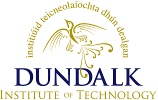Marroquín Paíz, Ricardo Modelling and forecasting changes in rivers and lakes for improved water resource management. Other. PhD thesis - unpublished, Dundalk. (Submitted)
|
PDF (Thesis)
Download (27MB) |
Abstract
Water, a key element for life and societal development, is increasingly subjected to pressures due to climate dynamics and human activities. Management is required to anticipate change related to these pressures in both the short- and long-term for improved environmental intervention, more efficient water use and a safer supply. Emerging forecasting techniques and software modelling tools provide a set of powerful methods for predicting change in environmental and water systems. Here, three case studies are presented, in which different model-based forecasting framework approaches were implemented for predicting specific water variables in either river or lake systems. In each case, the forecasting addressed a present-day water management issue. In the first study, long-term changes in river discharge and dissolved organic carbon (DOC) dynamics were projected under climate change scenarios for two catchments: one in Ireland (Glenamong, Co. Mayo) and one in Sweden (Vattholma, Uppsala). Projections for discharge differed between the two sites in magnitude, variability and direction of change depending on the future scenario and temporal scale. However, DOC was always projected to show increases in concentration throughout the annual cycle and over time, a change that would have important implications for drinking water supply. In the second study, short-term water temperature forecasting was used to generate predictions for lake water temperature, and based on those, on the timing of migrations of Atlantic salmon (Salmo salar) and European eel (Anguilla anguilla) between a freshwater lake (Lough Feeagh, Co. Mayo, Ireland) and the Atlantic Ocean. The short-term forecasts for water temperature performed exceptionally well, while the predictions of fish movements performed well for migration regimes that were not extreme, especially for the Atlantic salmon. The approach highlighted the value of coupling ecological forecasting, lake modelling and statistics to assist short-term management decision-making in settings where species can face risk. In the third study, DOC concentrations for the Glenamong River were forecasted in the short-term using two different workflows, as a novel proof-of-concept to advance near real-time prediction for water quality variables. The results indicated that the variability and accuracy in DOC predictions were largely influenced by the forcing data, the forecasting strategy and river hydrology, especially when using a DOC model that is driven by hydrological modelling as a forecasting tool. However, with reasonable performance for predictions four days ahead, this approach offered useful information not only for the development of near-term ecological forecasts but also for DOC-related water treatment applications. The findings of these studies represent a step forward in both modelling and predicting change in water systems, especially in the context of an increasingly uncertain world where more tools for improved adaptative capacity are needed. The development and application of the forecasting frameworks in this work are a novel contribution to ecological forecasting research and add to efforts bridging the gap between model outputs and decision-making to support water resource management.
| Item Type: | Monograph (Other) |
|---|---|
| Subjects: | Science |
| Research Centres: | Centre for Freshwater and Environmental Studies |
| Depositing User: | Suzanne Linnane |
| Date Deposited: | 08 Oct 2025 12:14 |
| Last Modified: | 08 Oct 2025 12:14 |
| URI: | https://eprints.dkit.ie/id/eprint/947 |
Actions (login required)
 |
View Item |
Downloads
Downloads per month over past year

